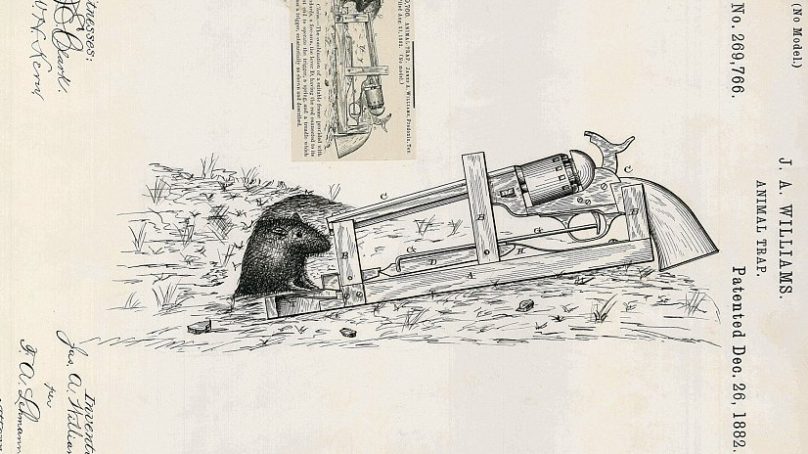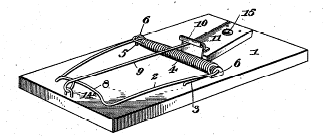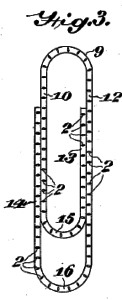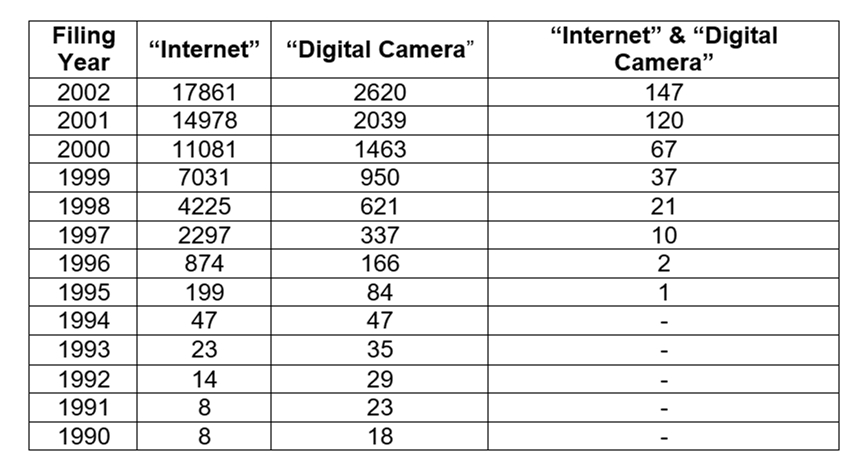
Inventing is a great way to spend your time. Not only does it give you something intellectually exciting to do, it may result in a benefit to society and to you personally. Please know that I am not an attorney or a patent agent and I do not presume to give you legal advice. But I am a named inventor on over 200 patents, having worked for General Electric’s R&D Center in upstate New York for a couple of decades with some really good researchers and patent attorneys. I learned the patent system and the elements of inventive behavior. I turned this experience into the book The Eureka Method: How to think like an Inventor, published by McGraw-Hill. I wrote the book for a new generation of inventors, for people like you, who have ideas but questions about the patent system and the path to invention.
The Invention Mindset
It’s in our DNA. When we use a device or practice a method, we often wonder how the device could be made cheaper, faster, lighter, or the method more efficient, less onerous—in short, improved. Edison is often credited with putting it simply and directly, “There’s a way to do it better. Find it.”
Improvement inventions do just that. Generally this class of invention is motivated by evolution of materials, chemicals, electronics, and all the other kit parts of modern systems. It is quite rare to find any product or method that cannot be improved by applying an evolved item or process step. The one invention I have seen that seems to have stayed still is Mr. Hooker’s “Animal Trap,” US patent US528671, issued November 6, 1894. As described by Mr. Hooker:
“The object of the present invention is to provide, for catching mice and rats, a simple, inexpensive and afficient [sic] trap adapted not to excite the suspicion of an animal, and capable of being arranged close to a rat-hole, and of being sprung by the animal passing over it when not attracted by the bait.”

The figure at left is from his patent. Does it look familiar?
Why has his invention persisted in a form so close to the original? There are probably two reasons. First, the parts required to make it are inexpensive and a manufacturer can buy in bulk and celebrate the blessings of scale. Second, the invention continues to work well. Quite simply, the trap has not needed to evolve because the mouse has not evolved. As an aside, consider the (scary) case where the pest, or threat, does evolve, as with various healthcare associated infections (HAI) such as e-coli strains. See this remarkable story about how bacteria transform into superbugs.
Many improvement inventions generally proceed with changes that leave most of the design and components the same. The addition of ridges to the paperclip is an excellent example. US patent1654076, issued December 27, 1927. In his patent the inventor, Mr. Griffith, said:
 “My invention relates to improvements in paper clips of the type known generally as “Gem” clips and it has for its general object to provide a clip in which the portions of the surfaces which are adapted to contact with the sheets of paper or other like material held thereby are roughened so as to more firmly hold and grip such sheets.”
“My invention relates to improvements in paper clips of the type known generally as “Gem” clips and it has for its general object to provide a clip in which the portions of the surfaces which are adapted to contact with the sheets of paper or other like material held thereby are roughened so as to more firmly hold and grip such sheets.”
The patent’s third figure, at right, should still look quite familiar today.
Let’s now take a brief look at inventions that do not focus on improvements but rather are characterized by combinations of elements to form a new and useful system or method. As our example, consider the digital camera and the Internet. Seems like a natural mix for new services. Today, using a camera and the Internet together is second nature to smartphone users. But look at the data in the table below. It spans thirteen years and enumerates the number of issued US patents up through a filing year having the terms “Internet,” “digital camera,” and “Internet & digital camera” in either their claims, their title, or their abstracts. See how long it took before the idea broke loose.
 Occasionally the results of combining different components are as singularly dramatic as was the movement combining individual coffee pods and coffee makers and the movement to combine the national treasure global positioning system (GPS) with stored maps and computer displays. For such highly impactful combinations we are tempted to assign the term “innovation” rather than invention.
Occasionally the results of combining different components are as singularly dramatic as was the movement combining individual coffee pods and coffee makers and the movement to combine the national treasure global positioning system (GPS) with stored maps and computer displays. For such highly impactful combinations we are tempted to assign the term “innovation” rather than invention.
Whether there is a bright line that can be drawn between invention and innovation is something I’ve often wondered about without success. Bill Walker in Wired wrote the following about the two words:
“People often use the words “invention” and “innovation” interchangeably. This is not only incorrect, but misses a few key subtleties in meaning that can change a conversation. Invention is about creating something new, while innovation introduces the concept of “use” of an idea or method. While this difference is subtle, and these words are listed in every thesaurus that I checked as synonyms of each other, they are definitely not 100% interchangeable. An invention is usually a “thing”, while an innovation is usually an invention that causes change in behavior or interactions.”
He may be on to something but for the moment, as far as my being able to define innovation, I’ll have to respond with Associate Supreme Court Justice Potter Stuart’s comment on his inability to define hard-core pornography: “I know it when I see it.”
Incubating Patentable Ideas
So, how do you come up with patentable objects? I don’t have perfect knowledge, but I do know how you may be able to attract them. The following are five of the ways that may work for you.
1. Scaling Up
When an enterprise decides to grow quickly (the term “exponential’ is often loosely used), there will be many opportunities to simplify or substitute many of the components that were used in the original schema of the present enterprise architecture.
For example, when a business franchise goes from local to regional, from regional to nationwide, from nationwide to worldwide, its logistical methods and implements will almost certainly have to be changed. Get a head start on the thinking and envision where and how this might be done, and what improvement or combination inventions might be attractively posed to the business chieftains once you have secured intellectual property protection. The multipliers offered by scale can make even a small individual savings something that should not be ignored.
2. Analogies—an Agar for more Answers than Questions
I remember how enthralled I was when I first learned of imaginary numbers, for example, the number which when squared yields minus 4. The idea was remarkable to me because it seemed to imply an imbalance between the number of questions and the number of answers, the former exceeding the latter. After I mastered imaginary numbers, the balance seemed restored and the initial glow dimmed. But over time I have come to suspect that there may indeed be a great imbalance between the number of questions and the number of answers, but that the imbalance lies in a greater ponderance of answers.
George de Mestral lived from 1907-1990. He was an electrical engineer who invented Velcro and named it by juxtaposing “vel” from velour (French for velvet) and “cro” from crochet (French for hooks). As the story goes, he came to invent of Velcro based upon his observation of burrs acquired on a nature walk.
I am a strong advocate for looking for analogies and seeing whether they engender patentable ideas, for there is a seemingly endless supply of analogies and they are found everywhere. On a personal note, I was studying urban multipath when an analogy to cryptography seemed to arise. This led to a cryptographic paradigm of the channel becoming the cryptovariable and a number of derivative patents. I also incorporated the concept in a text I wrote for McGraw-Hill, Cryptography Demystified, published in 2003.
3. Government Regulations—Especially in the Communication Arts
We’re all familiar with E-ZPass®, wireless fire alarms, baby monitors, cordless phones, Bluetooth®, and a panoply of other wireless gadgets that have mushroomed and filled catalogs and storefronts. How did they come about?
They came about because people wanted them. Wireless means convenience. But how? How may I just transmit signals? Don’t I have to apply to the government for permission? Pay a fee? File some forms? Get a license?
The wonderful answer is “no.” The government, in the early 1980s, did a proactive, pro-public, promotion that energized the regulation-to-technology transition. In 1981 the Federal Communications Commission (FCC) adopted a Notice of Inquiry [the bolding is mine]:
“… for the authorization of certain types of wideband modulation systems. The Inquiry is unusual in the way that it deals with a new technology. In the past, the Commission has usually authorized new technologies only in response to petitions from industry. However in the case of spread spectrum, the Commission initiated the Inquiry on its own, since its current Rules implicitly ban such emissions in most cases, and this prohibition may have discouraged research and development of civilian spread spectrum systems. As the next step in this proceeding, we are proposing in this Notice of Proposed Rulemaking rules that would authorize the use of spread spectrum under conditions that prevent harmful interference to other authorized users of the spectrum. We anticipate that this authorization will stimulate innovation in this technology, while meeting our statutory goal of controlling interference.”
And stimulate innovation it did! It was a prime example of inventors jumping on a technology to unleash all sorts of devices that consumers felt, or soon came to feel, they needed. The message is, keep aware of inchoate regulation. It may lead to opening the gates to those who are ready.
4. Gaming the System
The year 1895 was interesting for a number of reasons. In that year, the Supreme Court declared the Federal Income Tax unconstitutional, a Constitutional defect that was remedied by the 16th Amendment. Also in that year it became harder for players to game their game of baseball. That year the Infield Fly Rule was adopted. Prior to that, a pop up near the infield could often yield two outs depending on the number of outs, runners on base, and the psychology of gaming the runners by either catching or purposely not catching the fly ball.
Gaming, or counter-gaming, the system has been a national pastime for years and it’s a great way to conceive of inventions, especially in the security arts where they are sorely needed. In 1888, an Inspector Bonfield told a Chicago Herald reporter that:
“It is a well known fact that no other section of the population avail themselves more readily and speedily of the latest triumphs of science than the criminal class. The educated criminal skims the cream from every new invention, if he can make use of it.”
It’s not only mankind that games the system. There is the invention-inspiring squirrel. There are very many patented bird feeders, so many that a bird feeder invention is termed a “crowded art.” In 2006 I made some counts of the number of issued US patents that had the phrase “bird feeder” in their claims, title, or abstract. Of those I counted the ones that also specified the word squirrel. Searching over the decade of the nineties, I found the data shown in the table below.

Why do we find such a strong coupling between bird feeder inventions and squirrels? I believe it is an incidental societal stasis. People are staying enamored of birds, and squirrels continue to game the bird feeders and thereby bring out the inventiveness of people as they continually seek to counter-game the squirrels.
5. Recognize that Invention Never Stops
Why is the replacement of incandescent bulbs by arrays of LEDs in traffic lights such a large infrastructure undertaking? The answer derives from the impressive number of utility advantages that accrue through the improvement invention of substituting LED technology for incandescent light technology in traffic signals. Consider:
- Operating LED traffic signals requires less electrical power, on the order of a fifth of what it takes to run an incandescent signal.
- LED signals are brighter than the replaced incandescent bulbs.
- LED signals require less maintenance than incandescent signals.
But is there a downside to invention? And do the contingencies call for further invention? Consider the following taken from the story, Energy-saving Traffic Lights Blamed in Crashes:
“Many communities have switched to LED bulbs in their traffic lights because they use 90 percent less energy than the old incandescent variety, last far longer and save money. Their great advantage is also their drawback: They do not waste energy by producing heat. . . . Illinois authorities said that during a storm in April, 34-year-old Lisa Richter could see she had a green light and began making a left turn. A driver coming from the opposite direction did not realize the stoplight was obscured by snow and plowed into Richter’s vehicle, killing her.”
When major changes in infrastructure begin, think ahead and try to outthink the planners. Might there be problems? How could they be addressed using your ideas?
Some Advice to New Technologists Ready to Invent
Congratulations on your education and recognition in your technical art of choice. You have successfully emerged from a primarily academic environment set in the culture of engineering. You have seen how engineering has provided many of the benefits to society and you may be eager to invent to improve and augment the remarkable technology that we all enjoy. I have a few suggestions that may ease your progress.
Many of the suggestions relate to the differences between the academic environment and the culture of invention practitioners. This bridge is the hardest one for many technologists to cross probably because a formal technical education and a technical research job targeted to generating valuable company intellectual property, such as patents, both seem as though they should have a common culture. They don’t.
1. Learn the Basics of the Patent Process and its Laws
Failure to know and abide by many of the patent process guidelines may result in losing the benefit of your intellectual inspirations and efforts. For example, within academia, prompt sharing of ideas and knowledge is the way of expected conduct. Sharing of your ideas for something you may wish to patent may result in a disclosure that bars your quest to receiving a patent.
Another surprise proceeds from a patent’s granting only negative rights. Your patent prohibits others from doing such things as making or using your invention but your patent does not necessarily guarantee that you may make or use your invention, as your invention may comprise components that are themselves patented and require a license to be used.
2. Move in a Timely Fashion to Protect your Invention
The United States used to be a “first to invent” nation so far as patent priority was concerned. This meant that if you were, and could prove that you were, the first to conceive of an invention and diligently pursued its enablement, then you stood a good chance of being awarded a patent. This situation changed, however, and the US has joined the rest of the world in becoming a “first to file” nation, which is a much simpler procedure. If you are the first to file your invention with the US Patent and Trademark Office (the USPTO), then you will most likely have patent issuance priority over others who may have invented the same thing before you. Thus speed is of the essence.
Where this consideration illuminates a difference between the academic world and the domain of corporate research is that in academia many researchers are loathe to publish their work until it has been refined, polished, and relevant questions asked and answered. In the patent world, so long as what you propose is utile, novel, not obvious, and is taught so that someone of general ability in the field can make and use your invention, then you have most likely met the bar for receiving a patent. Somewhat surprisingly, there is no requirement that you need to understand why your invention works! It reminds me of the Mongol ruler, Genghis Khan, who advised his people to “not bathe or wash clothes in running water during thunder.” Good practical advice but not anywhere near an understanding of the physics of the danger.
3. Crediting Others
An application for a patent requires identification of the inventors, where an inventor is someone who has made a meaningful contribution to at least one of the patent’s claims. The claims are the most essential parts of the patent as they delineate exactly what the patent covers and protects. By regulation, if someone significantly contributes to only a single claim of an application, that person must be listed as an inventor, a co-equal status to an inventor who may have done all of the rest. It is difficult for some inventors to have to include others, as this seems to them an admission that efforts were incomplete. And for highly educated inventors, it is often a difficult challenge to understand that a patent and a peer-reviewed paper are very different in spite of many seeming similarities. The patent lists the inventors and the paper lists the authors. Inclusion or exclusion of someone from the list of authors to a paper is not a legal matter but a matter of courtesy and culture. In a patent, the list of inventors needs to be scrupulously accurate and neither include non-inventors nor exclude actual inventors. Further, in a paper, the order of the listed authors may connote relative prestige or weight of contribution. In a patent, however, the order of the listed inventors is meaningless.
For example, A and B became aware of a newly discovered electronic phenomenon and conceived a new device exploiting such. Their boss C directed them to construct a prototype and provided funding for the R&D. D joined them to do computer simulation and E helped construct a prototype. F worked out a theory to explain why the device works. When the patent application was filed, only A and B likely qualified as inventors.
4. Practice Clear Writing
Sounds simple and gratuitous, doesn’t it? Yet, picking on the nuances, the subtle ambiguities, and the vagueness that infect most of our writings is what the legal profession ably practices in taking a stand against a patent’s enforcement.
I remember having to memorize long lists of prepositions in junior high school. The memory of this came flooding back when I read of a finding of non-infringement in trials regarding US patent 4761290 “Process for making dough products.” One of the patent claim’s elements contained the wording:
“heating the resulting batter-coated dough to a temperature in the range of about 400° F. to 850° F. for a period of time ranging from about 10 seconds to 5 minutes”
I have bolded the preposition “to.” Do you see the problem? The Court of Appeals for the Federal Circuit upheld a district court’s finding of non-infringement. Judge Friedman ruled as follows, where I have bolded the preposition “at”:
“The sole issue in this appeal is the meaning of the following language in a patent claim: ‘heating the resulting batter-coated dough to a temperature in the range of about 400° F. to 850° F.’ The question is whether the dough itself is to be heated to that temperature (as the district court held), or whether the claim only specifies the temperature at which the dough is to be heated, i.e., the temperature of the oven (as the appellant contends). We agree with the district court that the claim means what it says (the dough is to be heated “to” the designated temperature range) and therefore affirm.”
5. See and Hear the World Outside of the Lab
As you move from an academic environment into the larger world, remember that only a small fraction of its inhabitants are technically oriented. Take time to listen, to understand what people are interested in, their current fantasies and fears. What they need and what they think they want.
Engineers and technicians are often at the lower end of the emotional scale. Try to understand the evaluation that a glass may be half full for some, half empty for others, and not just the sterile engineer’s observation that the glass is twice as big as it needs to be.
Best of luck!
About the Author
 John Hershey, Ph.D. (Electrical Engineering) is a named inventor on over 200 US patents and the author/coauthor of nine books. He served in the CIA and the Department of Commerce for 15 years and GE R&D for two decades. Dr. Hershey has served the adjunct faculty at the University of Colorado, Boulder; Rensselaer Polytechnic Institute; and Union College, Schenectady, New York. He also served for five years as a Program Evaluator for ABET (Accreditation Board for Engineering and Technology), and is an elected Fellow of the IEEE.
John Hershey, Ph.D. (Electrical Engineering) is a named inventor on over 200 US patents and the author/coauthor of nine books. He served in the CIA and the Department of Commerce for 15 years and GE R&D for two decades. Dr. Hershey has served the adjunct faculty at the University of Colorado, Boulder; Rensselaer Polytechnic Institute; and Union College, Schenectady, New York. He also served for five years as a Program Evaluator for ABET (Accreditation Board for Engineering and Technology), and is an elected Fellow of the IEEE.


